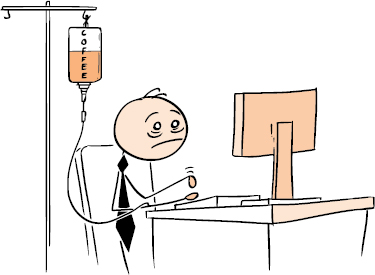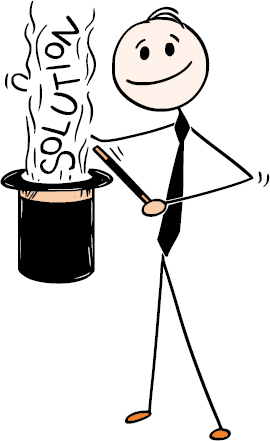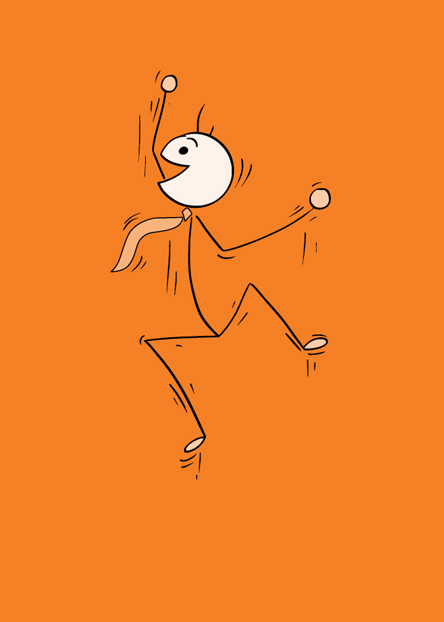HOW TO “CURE” A HANGOVER

DOGS’ HAIRS AND OTHER TALES
In medieval times, if you were bitten by a dog, the village’s medicine man used to clean out the wound and add a hair from the dog that had bitten you (if he could catch it). This is the basis of the legend of the “hair of the dog” as used in various hangover cures.
The hair-of-the-dog concept has remained popular in our drinking culture for centuries. Yet why do people recommend drinking more of the same stuff that made you feel ill in the first place? Adding more alcohol to a system already overwhelmed by it can only make matters worse, scientifically speaking.
Despite the title of this book, I’m here to tell you that it’s a myth that if you drink more of exactly what you were drinking the night before—in particular the spirit you were drinking last—then you will be fine. Yet it is true that a much more moderate use of this principal will work wonders—which is why the restorative cocktails beginning on page 41 have been specially designed to give you some genuine relief, helped along by a small amount of alcohol to numb the pain.
For instance, if you were out drinking Champagne all night, having a Buck’s Fizz at breakfast or brunch the next day will certainly buck you up, but in reality it’s the vitamins in the fresh orange juice that help.
Similarly, downing a vodka-based Bloody Mary (see page 52), a favorite of millions of hangover sufferers, adds the beneficial effects of tomatoes, which contain loads of vitamin C and potassium. By the way, pure organic tomato juice is best to make this with, so read the label on a can or bottle closely to check out the ingredients.
DON’T TRY THESE AT HOME
Having debunked dogs’ hairs in general, they still sound preferable to other options. In writing this book, I unearthed some incredible facts and came to the conclusion that past remedies for hangovers were, well, pretty scary. For instance, the Chinese placed a flat, round stone under the victim’s tongue, which achieved the desired effect by making him or her sicker than they already were!
The Roman politician, Cato, was a great believer in a bowl of stewed cabbage topped with raw, bitter almonds. In the seventeenth century, one common European cure for overindulgence was flogging and bleeding, using leeches.
Mexicans didn’t fare any better; a bowl of hominy, spices, tripe, and calf’s feet was given to hangover sufferers. Puerto Ricans rubbed half a lemon under their armpits to wake up the body’s system. Mongolians and Eskimos ate pickled sheep’s eyes, sometimes with tomato juice, to cure a blinding headache.
Russians still drink salted, fizzy cabbage water, and the Germans are fond of sauerkraut juice, also made of cabbage, and stacked with vitamin C. The Scandinavians and the Dutch like raw herrings, salted and served with chopped, sweet-tasting onions. There is a logic behind it: sugar, salt to make you drink more water, and lots of sodium—but give me a Bloody Mary any day! Peruvians drink mate de coca, or coca-leaf tea, as a cure, which is a cleansing drink that also settles the stomach.
The liquid from a boiled banana is a traditional Chinese cure for a hangover. According to the Chinese, this seems to have a detoxifying effect on the body. The fruit is easy on your body’s system and helps replenish lost nutrients caused by too much alcohol.

In particular, the early eighteenth and nineteenth centuries were a boom time for purveyors of hangover cures. Chemists dispensed potions with the magic words “guaranteed to cure a hangover” on their labels. Search the Internet today and you’ll discover that the patent medicine industry is still thriving. The unsuspecting can be seduced into buying pills that will probably do no more than act as placebos.
COFFEE, TEA, OR FRIED FOOD?
In the seventeenth century, coffee was prized for its beneficial effect on the hangover, although even then, it had its detractors:

In a word, coffee is the drunkard’s settle-brain, the fool’s pastime, who admires it for being the production of Asia, and is ravished with delight when he hears the berries grow in the deserts of Arabia, but would not give a farthing for a hogshead of it, if it were to be had on Hampstead Heath . . .
—Thomas Tryon, The Good House-Wife
Made a Doctor, 1692
It might seem to assist your body in waking up, but really, coffee is not a good thing to drink first thing in the morning. It doesn’t sober you up because it doesn’t decrease the amount of alcohol in the blood stream. Caffeine is a diuretic and will dehydrate you. Far better to stick to herbal brews such as peppermint and chamomile tea.
I have long considered the pros and cons of the classic greasy spoon breakfast the morning after. I can recall one ghastly experience early on in my marriage when my dear wife, Sue, feeling that I needed sustenance after a heavy drinking session the night before, approached the bedside carrying a tray with a plate of one foul and dark-looking sausage, two fried eggs ringed by fried bacon, and a deep orange pool of baked beans. I hid under the sumptuous bedcovers until she had taken it away. Sue now brings me my mother’s recuperative recipe in the same situation (see page 76).
Imagine what grease does to your insides? Bacon causes acid to flow into the stomach and gives you indigestion. Sausages bring on a second acid attack. Fried eggs and fried bread make more pain for your stomach.
Eggs, though, loom large in hangover remedies and can be found in Egg Nog, the Prairie Oyster (see pages 67 and 110), and a Polish hangover cure of raw egg yolk, vodka, and a dash of black pepper; and, of course, scrambled eggs and smoked salmon.
Generally, though, it is far better to eat bland foods such as rice, apple sauce, and toast, either dry or with a little butter.
BACK TO BASICS
Really, the best thing to do, as I have said before, is to drink lots and lots of water. Yes, I know it is an effort, but if you can throw back dozens of Tequila shots and suck several lemons the night before, then you can drink six glasses of water at regular intervals over the next few hours. Add ice if you like, and a slice of lemon for extra fizz. Drinking water with bubbles is oxygenating as well as hydrating.
Finally, honey is underestimated as a useful ingredient in a hangover cure. Honey contains fructose, a fruit sugar that helps the body rid itself of alcohol, and helps balance the blood-sugar level—which, as you know by now, is low the morning after.
THE BLOODY MARY TRADITION
While the idea of “hair of the dog” is a myth in most cases, this is a cocktail known throughout the world for its restorative effects. There is no substitute for a Bloody Mary. Measure for measure, the curative factors combined in this drink are astonishing.
Harry’s New York Bar (in Paris) is generally thought to be the birthplace of this cocktail. Paris in the 1920s was a second home to Americans in search of culture; among them was Ernest Hemingway, who held court at Les Deux Magots on the Left Bank of the Seine. The Bloody Mary year was 1921.
Fernand “Pete” Petiot combined tomato juice, vodka, salt, pepper, and Worcestershire sauce. There was nothing new about the vodka and tomato combination, but the addition of spices and the name were new. His inspiration was either Mary Tudor, aka “Bloody Mary,” or the actress Mary Pickford (accounts vary from author to author). Alas, Petiot is no longer with us to confirm precisely what he was thinking about at the time.
Vodka was available in Paris because Russian exiles from the 1917 revolution had brought their favorite drink with them. The arrival of canned tomato juice also made the cocktail’s creation possible.
In 1934, America was introduced to the Bloody Mary after John Jacob Astor tasted it and convinced Petiot to travel to New York to work at the St. Regis Hotel. Astor insisted that Petiot rename it “Red Snapper” because he felt the word “bloody” was too rude for clients. Petiot used gin because vodka was not easily available in the U.S. at that time. When one customer, Prince Serge Obolensky, requested that his drink be “spiced up,” Petiot obligingly added a dash of Tabasco sauce.

